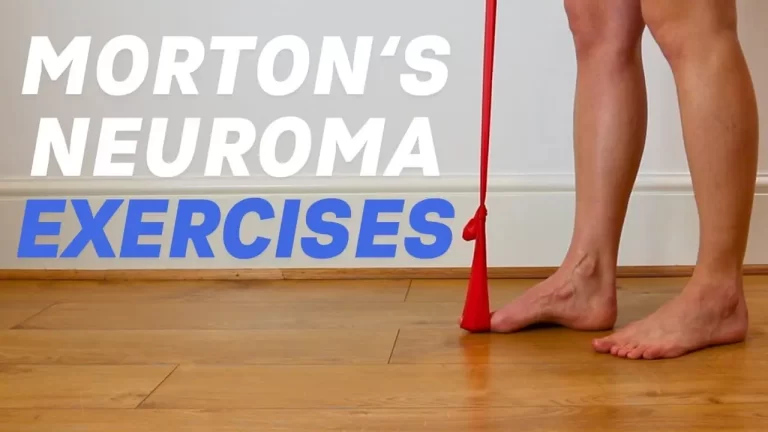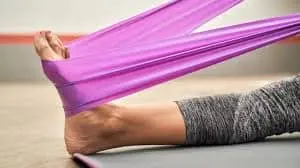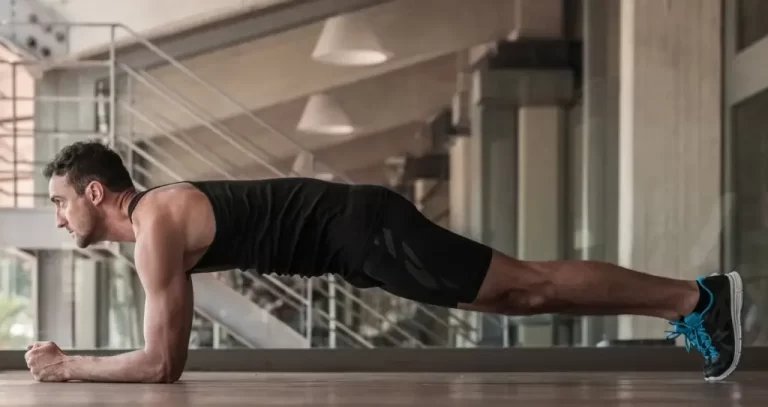9 Best Exercises For Lateral Pelvic Tilt
Introduction
Exercises for lateral pelvic tilt are essential for improving posture, relieving discomfort, and restoring alignment in the hips and lower back.
Lateral pelvic tilt, where one hip sits higher than the other, can lead to discomfort, lower back pain, and imbalance in movement.
The following exercises focus on strengthening and stretching specific muscles like the glutes, hip flexors, and core to correct the tilt, improve posture, and enhance overall mobility. Integrating these exercises into a regular routine can be effective for alleviating discomfort and promoting a more balanced posture.
One side of the pelvis being higher or lower than the other is a frequent postural imbalance known as lateral pelvic tilt, sometimes called hip hike or hip drop. If left untreated, this illness can cause pain, discomfort, and reduced movement.
Although uneven movement patterns, tight muscles, and muscle imbalances are some of the causes of lateral pelvic tilt, adding particular workouts to your regimen can assist address this problem.
With an emphasis on strengthening and stretching important muscle groups involved in preserving appropriate pelvic alignment, we will examine some of the finest exercises for lateral pelvic tilt in this tutorial.
By strengthening the hip, pelvic, core, and lower back muscles, these exercises help to improve balance and stability, which in turn helps to correct lateral pelvic tilt and enhance general posture and function.
- There are anatomical, functional, or both types of causes for a lateral pelvic tilt. The inability to differentiate between the anatomical and functional causes of a lateral pelvic tilt has led to a great deal of clinical ambiguity and inappropriate treatment of problems.
- The pelvis is prone to tilt laterally when there is unilateral lower back muscular hypertonicity or spasm.
- When the quadratus lumborum (QL) is hypertonic, this is very noticeable. because it houses the lower spine’s major lateral flexor muscle.
- Being a postural muscle in the trunk, the QL muscle is especially vulnerable to the illness.
- If there is a clear difference in tightness on either side, the pelvis may have a tendency to pull higher on the side with more QL tension.
- The tightness may be the result of chronically adopting bad postural habits or the aftermath of a severe episode of back pain.
- Some muscles may become weak as a result, while others may become rigid.
Which indications of lateral pelvic tilt are present?
The following issues can arise from a lateral pelvic tilt:
- Back pain
- Hip pain
- A shaky gait
- Walk with your spine, not in the appropriate alignment.
- tight muscles in the pelvis and thighs.
- weak gluteus maximus and abdominal muscles.
- A bent lower spine and a protruding belly are signs of poor posture.
- Uneven Hips & Step: The most obvious symptom of a lateral pelvic tilt is an uneven stride or gait when one hip is dropped more than the other.
- Unequal Shoulder Heights: One side’s shoulder will typically be lower than the other because one hip is higher than the other.
- Evident Leg Length Inequality: One symptom that is sometimes confused with a lateral pelvic tilt is leg length discrepancy.
- When someone has a lateral pelvic tilt, they could think their legs are longer or wider than they are.
- Leg Internal Rotation: The leg bones usually rotate internally when the pelvis tilts laterally.
- It should not be overlooked that the lateral pelvic tilt may be caused by the internal rotation of the leg rather than the opposite.
- If that’s the cause, the problem starts at the foot. Typically, one foot will be angled, or the ankle may slide inward, which can cause a flat foot or a collapsed arch. One foot bent will cause the hip to descend and the shin and femur to twist inward.
- Other Symptoms: While mild to moderate cases of left or right pelvic tilt usually do not exhibit any symptoms at all, severe or chronic cases can cause low back pain and muscular stiffness.
- If left ignored, a lateral pelvic tilt can lead to more severe health issues like:
- Disc degeneration: Because of the lumbothoracic spine’s distortion, lateral pelvic tilt may result in disc degeneration.
- Regardless of age or gender, a study found that patients with a high degree of pelvic tilt had a higher prevalence of disc degeneration in the L4-L5 region of the lumbar spine.
- Pain in the sacroiliac joint: Lateral pelvic tilt can result in the sacrum being asymmetrically positioned around the pelvic girdle’s ilia, or “wings.” The asymmetry may result in sacroiliac joint pain.
How can someone determine whether their pelvis tilts laterally?
To determine whether your pelvis is unbalanced:
Face a large mirror, keeping your feet shoulder-width apart.
Place the heels of your hands on the front of your hip bones, or the anterior superior iliac spine.
Hold a length of string between your two hands, or visualize a horizontal line between them.
Instead of sloping up or down, the line connecting your hands should be parallel to the ground. If the line is not parallel, you may experience a pelvic tilt to one side.
Expert opinions
- You should be examined by a qualified physical therapist if you are unsure whether you have a lateral pelvic tilt or if you are uncomfortable making the diagnosis on your own.
- Interestingly, there are two types of lateral pelvic tilts: “structural” and “functional.” Therefore, a physical therapist evaluation is necessary to identify the source of your lateral tilt.
- A structural pelvic tilt may be caused by a discrepancy in leg length, one leg being longer than the other, or a structural problem.
- A functional pelvic tilt is usually the result of muscle imbalance or compensation to lessen pain.
9 Best Exercises For Lateral Pelvic Tilt
Lateral pelvic tilts can be addressed at home with these exercises.
Pelvic Tilts
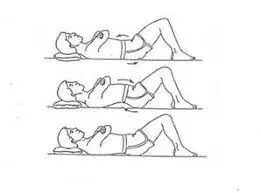
To maintain optimal pelvic alignment, address muscular imbalances, and improve overall stability, pelvic tilt exercises are crucial.
Steps To Follow:
- Lying on your back with your feet flat on the floor, flex your knees.
- Slowly tilt your pelvis backward while firmly pressing your lower back into the floor as you inhale.
- To softly arch your lower back, exhale, and raise your pelvis forward.
- Repeat ten to fifteen times, focusing on intentional movements.
Reverse leg raises
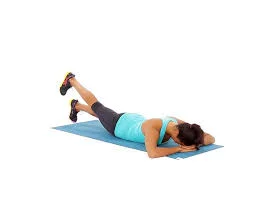
This workout will increase your hip movement and strengthen your gluteus muscles. Because the hip muscles that sit lower are probably weaker, this exercise may be challenging at first.
Steps To Follow:
- Sleep on your stomach, legs flat on the ground and hands supporting your forehead.
- Raise one leg while keeping the knee straight and the gluteal muscles firm.
- Avoid elevating the opposite hip off the ground.
- Drop your leg after holding it still for two to five seconds.
- Do 12 repetitions.
- Get new legs.
Avoid arching your spine when elevating your leg as this can cause back pain. Be careful not to tense your abdominal muscles too much during this workout.
Reverse standing leg raises
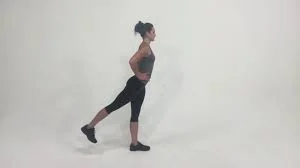
Your gluteal muscles will get stronger and your balance will get better with this exercise.
Steps To Follow:
- Stay balanced by clinging to the back of a chair or the wall.
- Raise one leg off the floor behind you, keep your posture straight, and contract your core muscles.
- Raise your leg straight behind you without hunching your back as high as it feels comfortable.
- Lower your leg gradually as soon as your toe contacts the ground.
- Do 12 repetitions.
- After swapping legs, repeat.
Keep your back straight and perform this exercise with low, controlled motions. Steer clear of swinging your leg since this can cause back pain.
Hip hike
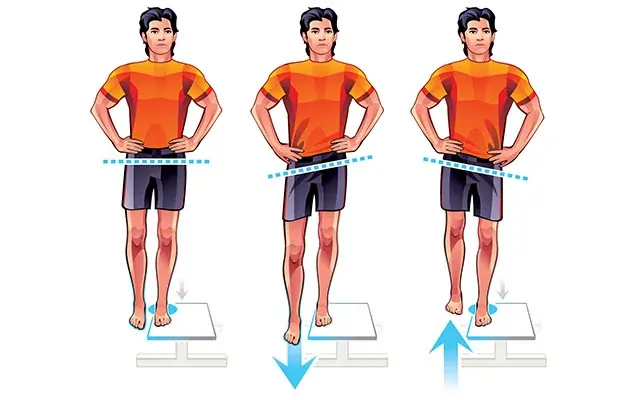
This exercise can improve pelvic posture and strengthen the hips and core.
Steps To Follow:
- Place your weight on the leg that has a higher pelvis, such as the side of a little step or box. Hold on to anything if you must.
- Apply pressure with your foot to raise the opposing pelvis as high as you can while maintaining a straight spine.
- After ten seconds of holding this, go back to the beginning position.
- You should perform 10 to 15 repetitions, or until the leg you are standing on becomes fatigued.
Side Stretch While Seated
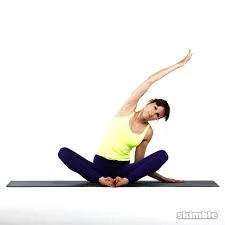
Steps To Follow:
- Extend your legs broad and locate a seat on the floor.
- To stretch your body laterally,
- Lift one arm above your head and reach out to the opposite side.
- Switch sides after 30 seconds of holding.
- Repeat three times on each side.
Squats Using Body Weight

Steps To Follow:
- When you squat correctly, make sure your knees stay in line with your ankles.
- Be mindful of maintaining your equilibrium and engaging the muscles that surround your hips.
- Perform three sets of 12–15 repetitions.
IT Band Foam Rolling
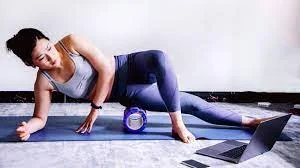
steps to follow:
- To begin, place the foam roller slightly below your hip bone while you are on your side.
- Your lower leg should be straight, your upper leg lowered and your foot flat on the ground.
- Using your forearm and the foam roller to support your body weight, slowly lower your upper leg onto it.
- By moving the roller up or down, you can find a sensitive but painless area and modify your position accordingly.
- Cover the IT band by softly rolling from your hip to just above your knee. Breathe deeply and allow your muscles to relax as you roll.
- If you find a region that is extremely painful, stop and remain there for a few minutes or longer. Apply gentle pressure with your other leg if needed.
- For an additional two to three minutes, roll each leg.
- Proceed to the other side.
Clamshell

This exercise will improve your hip range of motion and strengthen your gluteus muscles.
Steps To Follow:
- Bend both knees to a 90-degree angle while supporting your head with your lower arm in a lateral position.
- Before you start, make sure your spine is relaxed and stable, then gradually roll your top hip forward toward the ground.
- Raise your upper leg and maintain a straight gait.
- After five seconds of holding, flex your knee downward.
- Do 12 repetitions.
- Switch places.
Take care not to turn your spine during this workout. Aim for short, deliberate movements.
Your legs can be drawn closer to your torso or extended. You can use all of the muscles in that area by making a tiny movement with your body.
Hip adduction
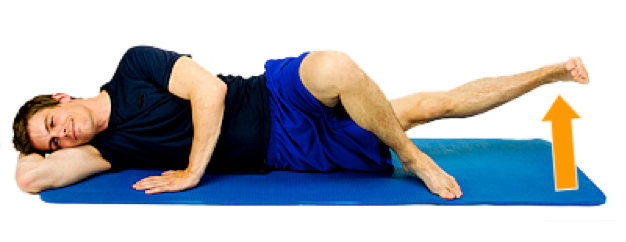
This workout will strengthen the connective tissue muscles located inside your thighs.
Steps To Follow:
- Lying on one side, extend both legs.
- Elevate your skull using your lower arm.
- Placing your top leg’s feet on the ground in front of your bottom leg’s knee, connect the top of your leg over your bottom leg.
- Raise your lower leg as high as it feels comfortable while maintaining a straight leg.
- Drop your leg after holding still for five seconds.
- Do 12 iterations.
- Switch places.
Quadratus Lumborum
- If you have ever heard a client mention that one leg is shorter than the other, you may have a client with a lateral pelvic tilt.
- A lateral pelvic tilt may cause one leg to seem shorter than the other. The quadratus lumborum is frequently the primary muscle responsible for causing and restoring a lateral pelvic tilt.
- The main purpose of this muscle is side-to-side or lateral bending. This helps to stabilize the pelvis.
- When this muscle on one side of the spine gets more tense, the pelvis on the other side is pulled up, causing a lateral pelvic tilt.
- As you assess your customers, make the effort to find out if they have a pelvic tilt or show symptoms of one.
- As a fitness trainer, you can provide a suitable training program that includes the right correction exercises by being aware of if a tilt is present.
- Make sure you’re not bending your hips and lifting your legs.
The importance of stretching
These workouts will strengthen underworked muscles. To maintain proper balance, you will also need to stretch the overused muscles.
Conclusion
Regular exercise may help you manage the pain and discomfort caused by a lateral pelvic tilt. To monitor your progress, do the mirror test. Keep doing these exercises even after your pelvis has adapted. This will keep the condition from deteriorating.
Finally, things like the causes, symptoms, and potential treatments of the ailment. However, in general, lateral pelvic tilt must be treated to maintain physical health and prevent associated issues.
Regardless of the reason for postural habits, structural abnormalities, or muscular imbalances, it is imperative to get professional guidance from healthcare professionals, such as physical therapists or orthopedic specialists.
Generally speaking, lateral pelvic tilt can be recognized and treated to improve posture, reduce the likelihood of associated pain or accidents, and improve musculoskeletal health in general. For case-specific advice and guidance, healthcare professionals should always be sought.
FAQs
Is it possible to correct lateral pelvic tilt?
These could involve utilizing braces or corsets, having the spinal anomaly surgically rectified, or, in more extreme cases, both. Physical therapy, stretching, and sometimes muscle relaxants are used as traditional therapies for lateral pelvic tilts, which are functional issues caused by tense muscles.
Which exercises can be used to correct lateral pelvic tilt?
Place your weight on the leg that has a higher pelvis, such as the side of a little step or box. Cling to whatever if you can. Apply pressure with your foot to raise the opposing pelvis as high as you can while maintaining a straight spine. After ten seconds of holding this, go back to the beginning position.
How can lateral pelvic tilt be corrected while I’m asleep?
The easiest solution if you sleep on your back is to put a blanket or cushion beneath your knees. The muscles in your lower back relax and extend as a result of realigning your anteriorly tilted pelvis to a neutral position.
What does a lateral pelvic tilt look like?
When one side is lateralized, this “habit” is what makes it seem taller than the other. Some patients refer to it as a “twisted pelvis” or a “rotated pelvis,” because their pelvis may feel twisted while also being elevated on one side.
References:
- Ginta, D. (2021, June 8). 5 Lateral Pelvic Tilt Exercises. Healthline. https://www.healthline.com/health/fitness-and-exercise/lateral-pelvic-tilt-exercise
- Pelvic Tilt: What Is It and How Do You Correct It? | ISSA. (n.d.). https://www.issaonline.com/blog/post/pelvic-tilt-what-is-it-and-how-do-you-correct-it
- Sharma, R. (2024b, February 11). 9 Best Exercises For Lateral Pelvic Tilt- for Alignment. Mobile Physiotherapy Clinic. https://mobilephysiotherapyclinic.in/exercises-for-lateral-pelvic-tilt/





